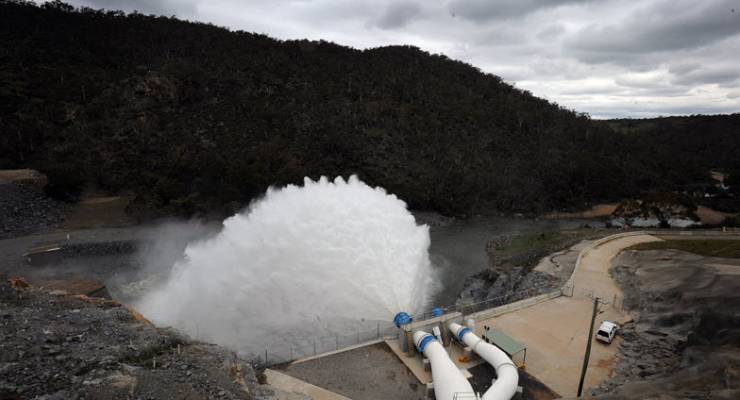
The Productivity Commission has warned that billions of dollars in water infrastructure is being wasted due to lack of cost-benefit analysis, misdirected subsidies and a reluctance to properly plan dams and water distribution works.
The government, under pressure from the Nationals, has committed to $4 billion in water infrastructure since coming to office, about half of which has already been spent on dams and irrigation infrastructure. That’s despite the Productivity Commission repeatedly warning that government spending on irrigation infrastructure — particularly when done in the name of conserving water — is highly inefficient. Back in 2010, the PC warned
“The Commission has examined the experience of Australian programs for recovering water through subsidising infrastructure, and concluded that they are generally much less cost effective and efficient than buybacks. For example, infrastructure projects financed under the Living Murray Initiative recovered water at a cost almost 40 per cent greater than the cost of market-based measures.”
Similar warnings were made by the National Water Commission, until the Abbott government killed off that body.
Now seven years later, in a draft report in response to a government request for an inquiry into national water reform, the Commission has again savaged spending on new water infrastructure. “There has been a tendency for public investment in irrigation infrastructure to deliver less than the anticipated benefits. Many past projects were not economically viable and have placed both immediate and ongoing costs on taxpayers.” The Commission also notes that where business cases have been done,
“The business cases supporting irrigation infrastructure projects have often been found to be inadequate. Some of the more common shortcomings of irrigation infrastructure business cases include: overly optimistic estimates of a project’s viability invalid assumptions; and inadequate sensitivity analysis . Another failing is completing the analysis only after a funding decision has been made and publicly committed to.”
A particular problem is that the actual pricing principles that state and federal governments have agreed would underpin the pricing of water infrastructure specifically excludes government grants — that is, irrigators don’t have to pay a price that reflects the actual cost of building new infrastructure, just the maintenance costs. “As a result an important check on the viability of grant funded projects — irrigators’ preparedness to pay — has been missing.” The draft report notes that when pricing is based on the actual cost of projects — as was proposed for the Nathan Dam project in Queensland — they stop being viable and don’t proceed.
The report also takes aim at the controversial Northern Australian Infrastructure Fund, noting that dams and other irrigation projects that could be subsidised with the multi-billion dollar fund are not required to be compliant with the principles of National Water Initiative. The PC wants all water infrastructure projects funded by government to meet the same basic criteria:
- be subject to a transparent cost-benefit analysis;
- governments should finance, not grant money for, water infrastructure;
- pricing should cover the full costs of construction as well as operation (called “upper bound pricing);
- should be NWI-compliant, and part of a broader water plan; and
- should have water entitlements pre-sold to determine viability — if water entitlements are too expensive for irrigators, it’s a sign the project isn’t viable.
Don’t look for enthusiastic implementation of that any time soon.








I’d gladly fund a dam if it was big enough and deep enough to drown this whole LNP government in. The business case would be simple: an overwhelming public good.
I have no confidence in the competence of Water Minister, Barnaby Joyce, to implement any project that stacks up with the PC criteria.